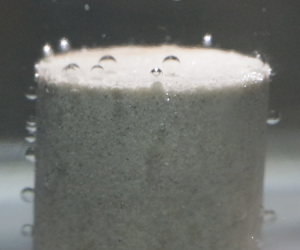Published online by Cambridge University Press: 03 November 2020

The phase behaviour of fluids at capillary conditions differs from that in bulk media. Therefore, understanding the thermodynamics of solvents in confined media is essential for modelling non-isothermal and non-isobaric engineering applications in porous media – including enhanced oil and heavy-oil recovery. The Thomson equation states that pore sizes have control over the boiling points of liquids in capillary channels. As pore spaces get smaller, boiling temperatures become lower than the normal boiling temperatures of the same liquids. The objective of this paper is to inspect this phenomenon by physically measuring the boiling points of different liquids at capillary conditions and comparing them with the values at bulk conditions and boiling temperatures obtained from the Thomson equation. Several types of microfluidic chips were used as capillary media to observe the phase-change behaviour of heptane, heptane–decane mixture and naphtha. Additionally, vaporization of water, heptane and decane was investigated in Berea sandstone, Indiana limestone, tight sandstone and shale. Pore size distribution analysis was performed to identify the pore diameter variations in each rock sample, and how the existence of extended nanopores in the rocks could impact the phase alteration.